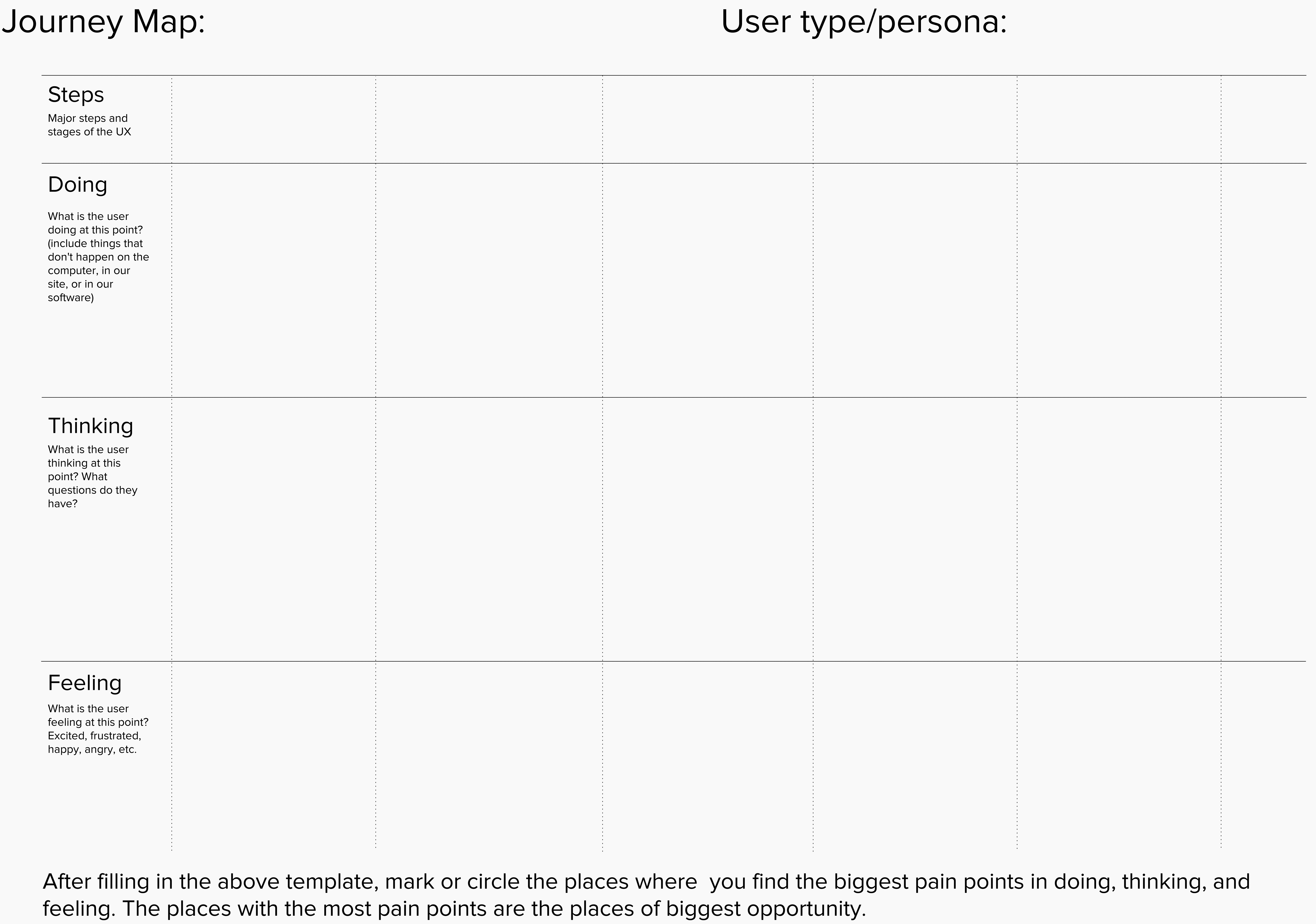Whether you’re just starting an ecommerce business or considering a rebrand, one of the most…
The power and purpose of knowing your customers

“What got us here won’t get us there… I want to have design leading the way. A lot more user research. A lot more mockups.”
– Matt Mullenweg
At WordCamp US 2016, Matt Mullenweg’s State of the Word outlined a vision for WordPress being design-led. Since then, WooCommerce has doubled down on our efforts to follow suit.
From growing our one-person design team to five (and still hiring!) to talking more to our customers — hearing what’s most important to them, and how eCommerce fits into their lives – we’re just getting started on our journey to make this transition, and we’re learning a lot!
Our hope is that you can take some of the lessons we’re learning and apply them to your business, no matter how big or small.
It’s never too soon or too late to start talking to your customers, understanding who they are, and how they made their way to you today.
1. Understanding and mapping a customer journey
One key component of the design process is understanding your customer’s experience, often referred to as mapping a customer journey.
This involves examining a customer’s path from the first moment they interact with your brand to the endpoint of that task. For example, purchasing a product, completing a course, or booking a reservation.
These touch points can then be mapped to understand the overall picture.
To understand and apply this to your business, ask yourself:
- What tasks am I wanting them to complete?
- Why would someone need or want to complete this task?
- How easy is it for them to complete the task?
- What are the blockers?
From here, write out steps for each task.
We use the diagram below to help map each step, ensuring we consider what customers may be thinking and feeling alongside external factors that could interfere.
For example, if there are limitations with their device, connectivity, or environment that prevent them from easily completing a task and leave them feeling confused or frustrated, we note that.

Download PDF version
Once every touch point is mapped, you can then vote on which are the most important areas to focus research.
When thinking about tasks, it’s important to consider what stage your customers are in via interactions with your brand and products.
Each stage has its own sets of needs and states of mind. For WooCommerce, we apply the Six Universal Experiences from IBM, which breaks down the customer journey into six distinct phases:
- Discover, Try, and Buy
- Getting Started
- Everyday Use
- Manage and Upgrade
- Leverage and Extend
- Get Support
2. Talking to customers: smart listening and uncovering insights
One way to examine each of six phases is to talk to customers while they are in each stage. What initially brought them to you? Why did they want get started? How do they use your product or service? What happens next?
When talking to customers, it’s critical to ask the right questions. Rather than having them to talk about what they want, ask customers why they do what they do. Have them show you how they use your product or website, then observe how they go about it. Listen to what they say, but also take notes on what they do.
“To design the best user experience, pay attention to what users do, not what they say. Self-reported claims are unreliable, as are user speculations about future behavior. Users do not know what they want.”
— Jakob Nielsen
For example, asking our customers what they think of a new WooCommerce feature that we have yet to develop would produce the wrong insights: they’d only be able to speculate on what they think we mean or want to hear. A better approach would be to observe customers complete a related task for the new feature, such as adding a new product.
By observing and talking with customers, we may discover that more control over customizing the product page could be useful because they want to be able to cross-sell a few related items but the theme layout isn’t what they wanted. Asking them what they want would not produce the same result.
As Erika Hall, author of Just Enough Research and co-founder of Mule Design suggests:
“Good research is about asking more and better questions, and thinking critically about the answers. It’s something every member of your team can and should do, and which everyone can learn, quickly. And, done well, it will save you time and money by reducing unknowns and creating a solid foundation to build the right thing, in the most effective way.”
— Erika Hall
Erika is an advocate of good research and knows what it takes to uncover insights that can influence how customers use the products you’re creating.
“To make the best use of your time and truly do just enough research, try to identify your highest-priority questions—your assumptions that carry the biggest risk.” —Erika Hall
3. Laying down assumptions, building empathy and cultivating curiosity
Anything you think you know about your customers should be considered an assumption that needs to be validated, when diving into research. Build your hypothesis and start exploring. For example, if you were to outline high priority questions for your eCommerce website, you might ask:
- Can my customers easily make it through checkout?
- What’s blocking them from making a purchase?
- What information are they looking for?
- Can they find the information they need to help make the decision to purchase?
From here it’s a matter of finding customers to talk with, setting a time to meet, and planning for your session. Ideally this can be done in person, but that shouldn’t stop you from talking to your customers in other ways.
There are many tools we use for remote user research. If you’re interested in learning more about various research methods and best practices, Usability.gov is an excellent resource.
In addition to Erika Hall’s Just Enough Research, Steve Portigal’s book, Interviewing Users: How to Uncover Compelling Insights goes in depth on interviewing techniques, tools, and how to analyze results. Both books can be purchased via Rosenfeld Media, which we’re proud to say is powered by WooCommerce!
In conclusion, know thy customers!
Learning more about customers and how your product or service fits (or doesn’t) into their everyday life allows you to relate to who they are on a more personal level.
Building empathy for your customers is key to helping ensure your offering is as useful, desirable, and accessible as possible. It’s important to take time to understand the needs and expectations of your customers as it’s been proven time and time again:
“Across sectors, satisfied customers spend more, exhibit deeper loyalty to companies, and create conditions that allow companies to have lower costs and higher levels of employee engagement.”
—The CEO Guide to Customer Experience McKinsey Quarterly, August 2016
If you already have experience with customer research for your website or business, I am curious: What lessons did you learn? What challenges did you face? What advice would you give as to why you found customer research to be helpful?
- Ways to create ongoing relationships with your customers
- Smart pricing strategies that inspire customer loyalty
- Ways to identify and encourage rituals in your customer’s journey
Original article written by Maria Scarpello >
[wpseo_map width=”100%” height=”300″ zoom=”-1″ map_style=”roadmap” scrollable=”0″ draggable=”1″ show_route=”0″ show_state=”1″ show_url=”0″] [wpseo_address hide_address=”1″ show_state=”1″ show_country=”1″ show_phone=”1″ show_phone_2=”0″ show_fax=”0″ show_email=”1″ show_url=”1″ show_logo=”0″ show_opening_hours=”1″]



